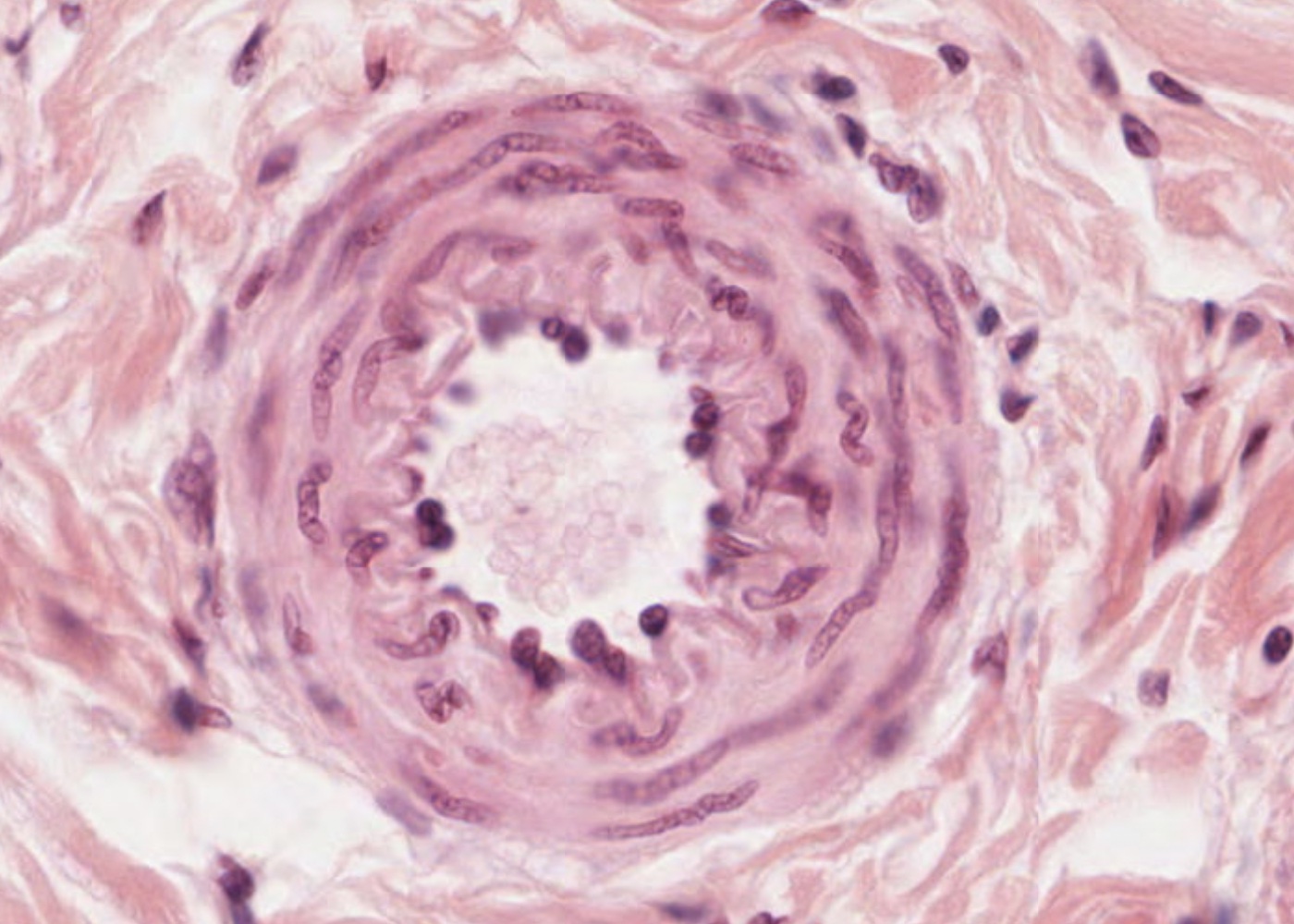All the cells of the body receive their nutrients from blood delivered via the cardiovascular system. This system consists of the heart and blood vessels (arteries) delivering nutrients to the cells and veins returning deoxygenated blood back to the heart. A vast network of capillary beds is the specific site for the exchange of nutrients and waste products to and from the cells via surrounding interstitial fluid.
Learning outcomes
After studying this module, you should be able to
- identify endothelium and understand its important functions.
- describe the flow of blood through the various chambers of the heart and the role of specific heart valves.
- know the structure of a heart valve.
- understand the structure of the heart wall.
- understand the organization of the impulse conducting system of the heart.
- identify Purkinje cells and know their function.
- understand the structure of cardiac muscle.
- understand the structure of arteries and distinguish between elastic and muscular arteries, small arteries, arterioles and capillaries. What is the functional role of the elastic fibres in elastic arteries? What is the functional role of smooth muscle in muscular arteries?
- know the three types of capillaries – i.e. continuous, discontinuous and fenestrated capillaries and the name of at least one organ each type is located.
- distinguish between large and small veins and venules.
- know some of the features of atypical arteries and veins (albeit they will be dealt with in specfic organs in later topics).

